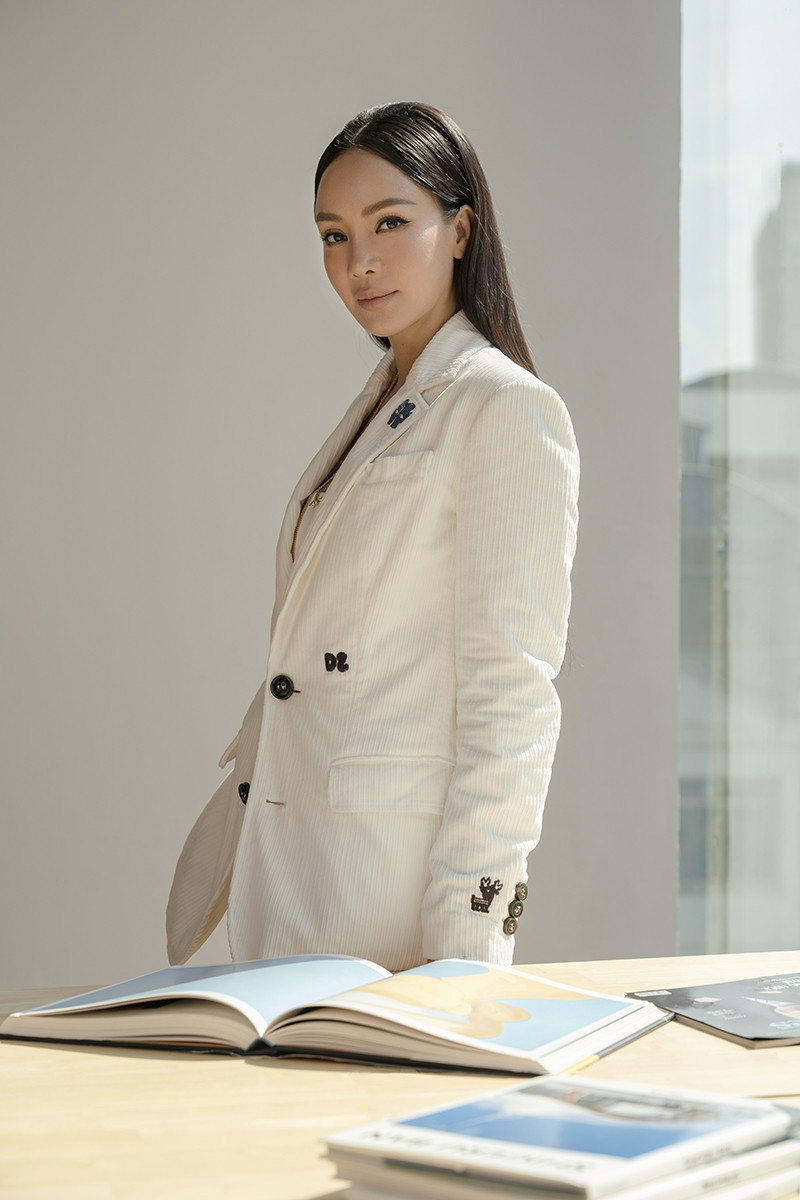Maison RMI, which has just celebrated its 20th anniversary, has set the goal of expanding its network from 120 stores at the present to 400 in the next five years, with revenue increasing from US$110 million to US$400 million.
The company plans to set up new stores not only in cities, but also major provinces such as Binh Duong, Vung Tau, Kien Giang, and Quang Ninh. Ms. Pham Thi Mai Son - CEO of Maison RMI, talked with VietNamNet about the plan and the Vietnamese fashion market.

How are you preparing for the network expansion plan?
During the past 20 years, Maison's annual revenue has always been consistent without a single dollar of outside institutional investment. We are proud of this. As a result, our emphasis on profitability will remain at the core of our growth. As we prepare for exponential growth over the next 5 years, our company plans to raise capital to fuel our expansion, but with the intention of always staying true to our core principle of “profitable growth” which has gotten us to where we are today.
To support our growth we are investing heavily in operational capacity in several ways. In terms of human resources, we recruit a strong executive leadership team with decades of combined industry experience.
For instance, Our COO was the co-founder of Le’Flair, and a former manager at Lazada. Our VP of Commercial also has three decades of experience in the field of retail in several countries.
We have three distribution centers across the country, and nearly 10,000 square meters of total storage capacity. As we are trying to enter new markets, we will expand our infrastructure to support our growth.
We also see huge improvements in technological Infrastructure. We’ve established a powerful business intelligence team for more than three years to generate real time reports and analytics for our management team to make data-based decisions. The SAP and ERP systems have been built for nearly 10 years.
As consumers prefer online shopping, including fashion items, is it risky for Maison RMI to expand outlets?
I don't think this is a risky step. Because with fashion, the need to touch, see, try, and to put on clothes and experience brands directly at shops are still very popular and necessary for Vietnamese consumers. In fact, 90% of Maison RMI's overall revenue comes from sales from physical stores.
However, we intend to develop e-commerce and online shopping platforms in parallel with the expansion of physical outlets. We aim to create an ecosystem for customers to be able to access our brands in any way they find convenient - whether that’s our Maison World app, our Maison Online e-commerce platform, our individual brand online stores or visiting one of our retail outlets.

What is the model of international fashion distribution that you consider to be the standard and worth referring to? How do you apply this model in your business while innovating and creating your own systems?
As a distributor of international fashion brands, I learn a lot from the brands we are distributing such as Charles & Keith, Pedro, MLB, Havaianas,... As a retailer, I believe it is essential to understand the procedures, standards, and positioning of the brand before attempting to be creative. Master these first and then you can start selling.
We look for partners that have a vested interest in the long-term growth of the brand within our market and offer us win-win terms. It’s important for our team to work closely with our partners for the growth of the brand in a way that is in alignment with their vision while also taking into account important localization factors for the Vietnam market, such as opening “street shops”, and not only in mall locations.
At the same time, our newly established “private label” brands will become an increasing part of our business over time. We’ve recently launched Gigi, our chic, Parisian-inspired Vietnamese fashion brand and Ceci, our accessories line for the youth. Both brands have been well received in the market since launching and we will consider potentially acquiring others, already established local fashion brands which we can scale with our resources, infrastructure and expertise.
Regarding competition from other brands that have the same target customers, what are your strategies to keep loyal customers and attract new ones?
Competition is inevitable, and there are indeed very strong, well established and powerful players in the market whom we compete with which also have excellent brands in their portfolio. However, I believe there are a few key strategies we can utilize to both keep loyal customers and attract new ones.
Firstly, we want customers to benefit more from their purchases through our reward program. We launched our loyalty program recently and adoption of it along with our loyalty app has been strong so far.
Secondly, we want to focus on customer experience. We strive to provide the best services, from consultation, delivery to after-sales services. Additionally, we provide outstanding service and engagement; answering all enquiries within 24 hours.
Thirdly, we take the long-term development of our brands and positioning extremely seriously through brand activities & campaigns, events, communication, and collaboration with top KOLs in the fashion industry.
We will keep the focus on mass-aspirational brands (in fashion & cosmetic) vs competition which is losing the focus and getting more and more diversified (F&B, Travel, etc).
Quality human resources is also one of the challenges in the business expansion journey. How do you solve this issue?
As we expand, standardization and systemization of every aspect of our stores will be essential. We are standardizing how products are displayed, how best sellers are optimized and everything from the lighting, temperature, store cleanliness. Our mystery shopper program will constantly be auditing our stores nationwide to ensure this consistency is met.
On top of that, as mentioned before, learning and development will be essential. When you walk into any of our stores, we want to make sure every sales associate you speak to is an expert on their brand. Everything from the names of each individual aspect of a specific product, the trends, the new collections, the customer service, sales and client engagement is being broken down into training and onboarding programs.
To ensure smooth operations and maintain company culture, what is your management method?
Along with training, comes career paths. It’s important for employees to believe they can have a future in a company with clear job descriptions, KPI, roles and responsibilities which outline the path for them to be promoted, increase their income and advance into management positions.
That’s the difference between a job and career. I want people to grow in our company. As we open more stores, we will need more store managers. Next year our expansion plan is forecasting us to open another 40 stores. That means we will need 40 new store managers, which we would rather promote from hard working existing staff. We will also introduce new international brands to the market, meaning we’ll need new brand directors as well. All this equals amazing career growth for anyone in our company, regardless of their current position, if they’re willing to learn, work hard and maintain a positive attitude.
More important than anything else, it is empowerment. I always encourage my employees to try new working methods in operational stages so that the work goes smoothly, thereby completing the goal. I believe that once employees are empowered and trusted, they will try their best to contribute to the work, which is beneficial for the overall development of the company. That is also a company culture which I want to create at Maison RMI.
PV